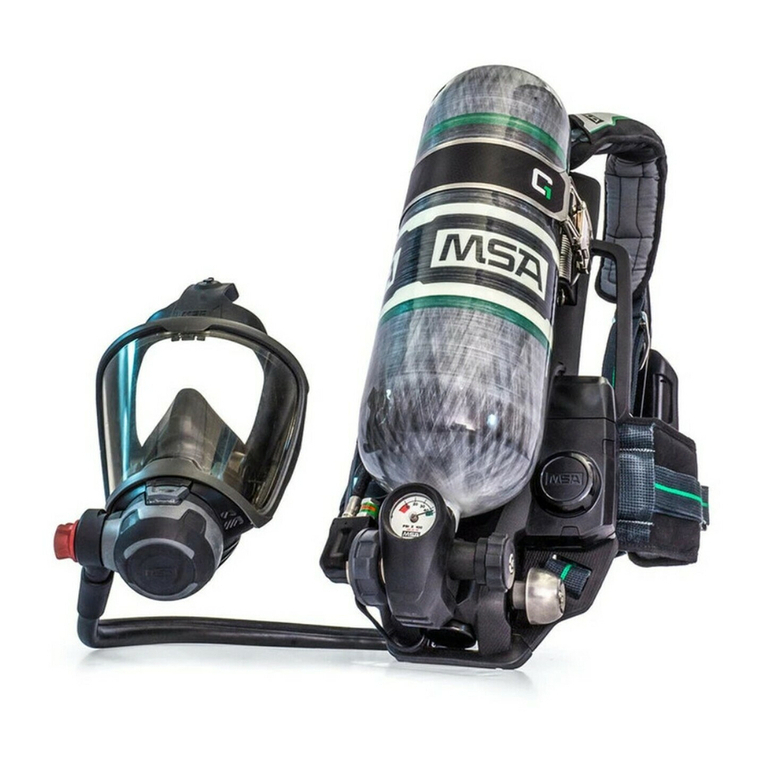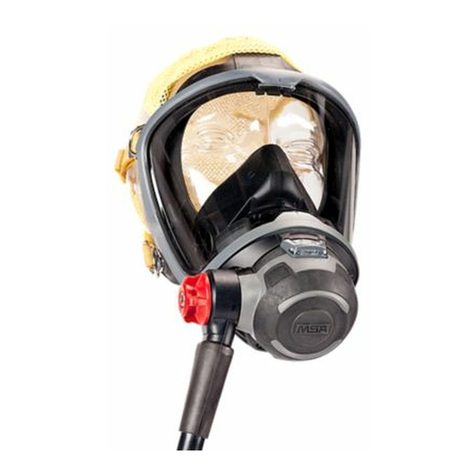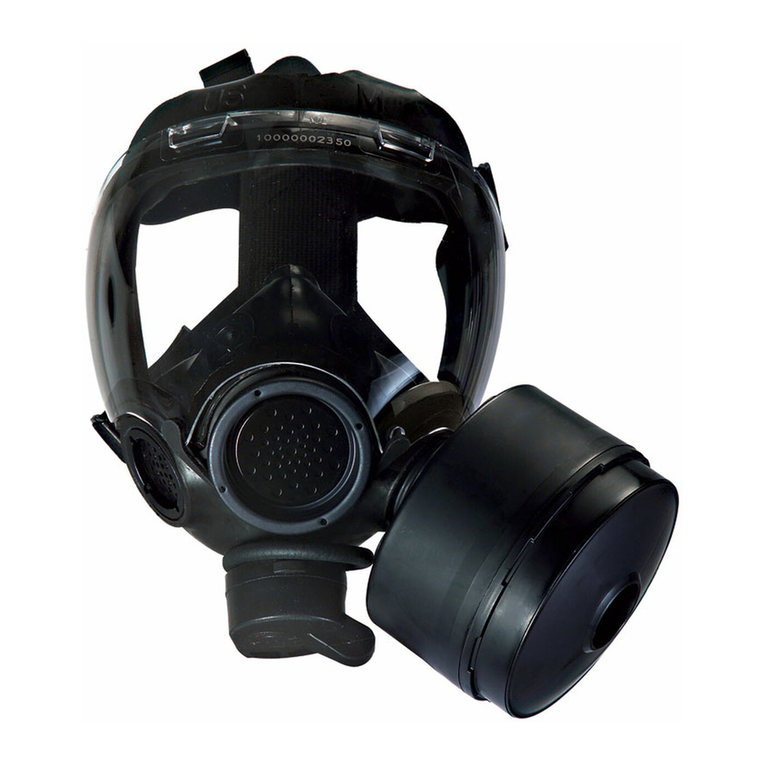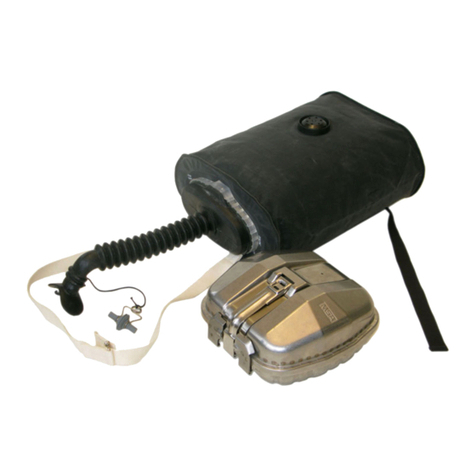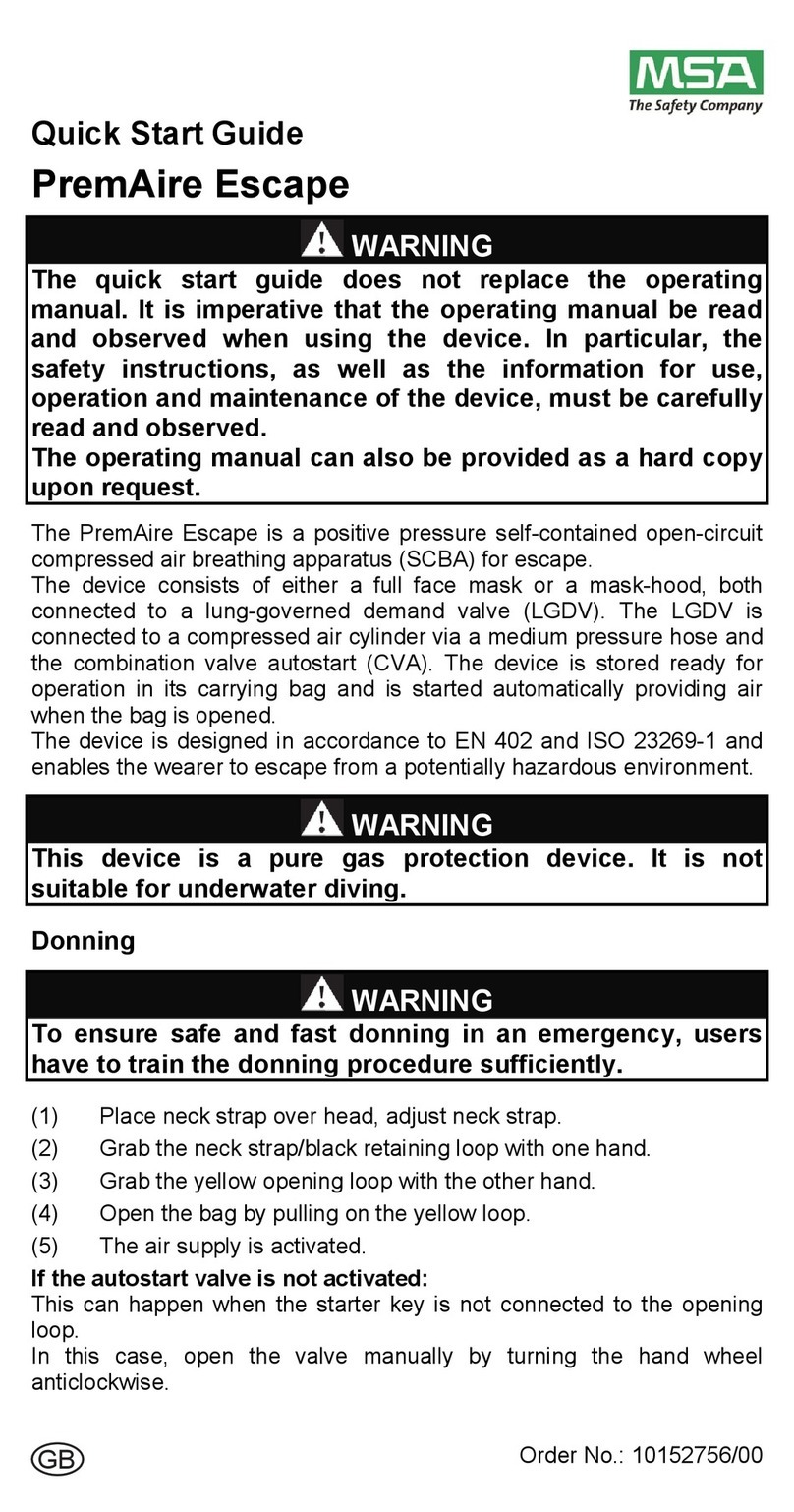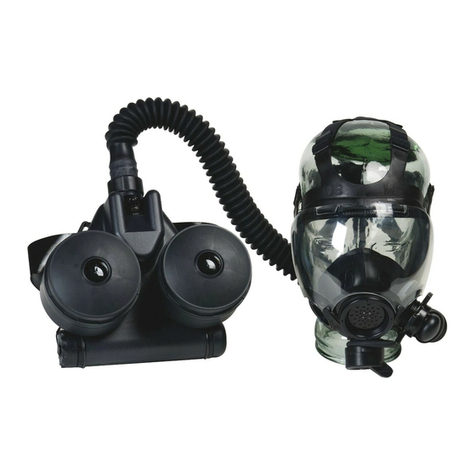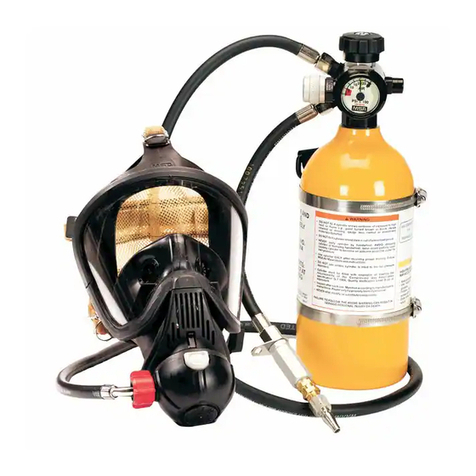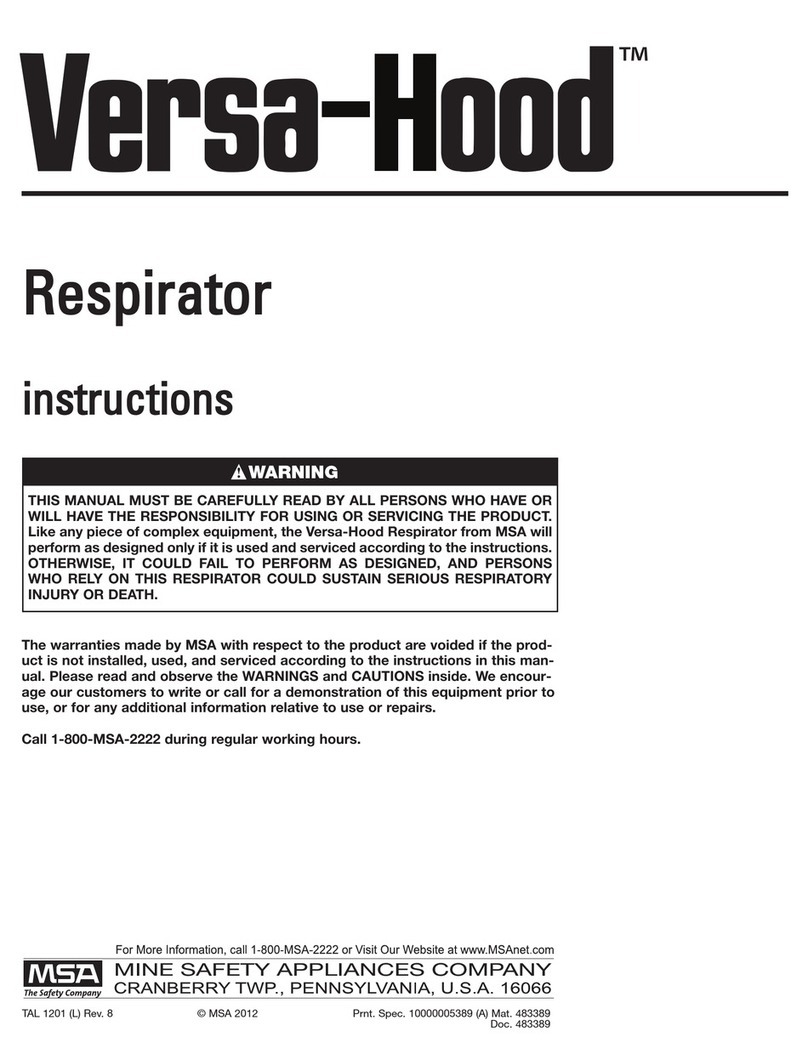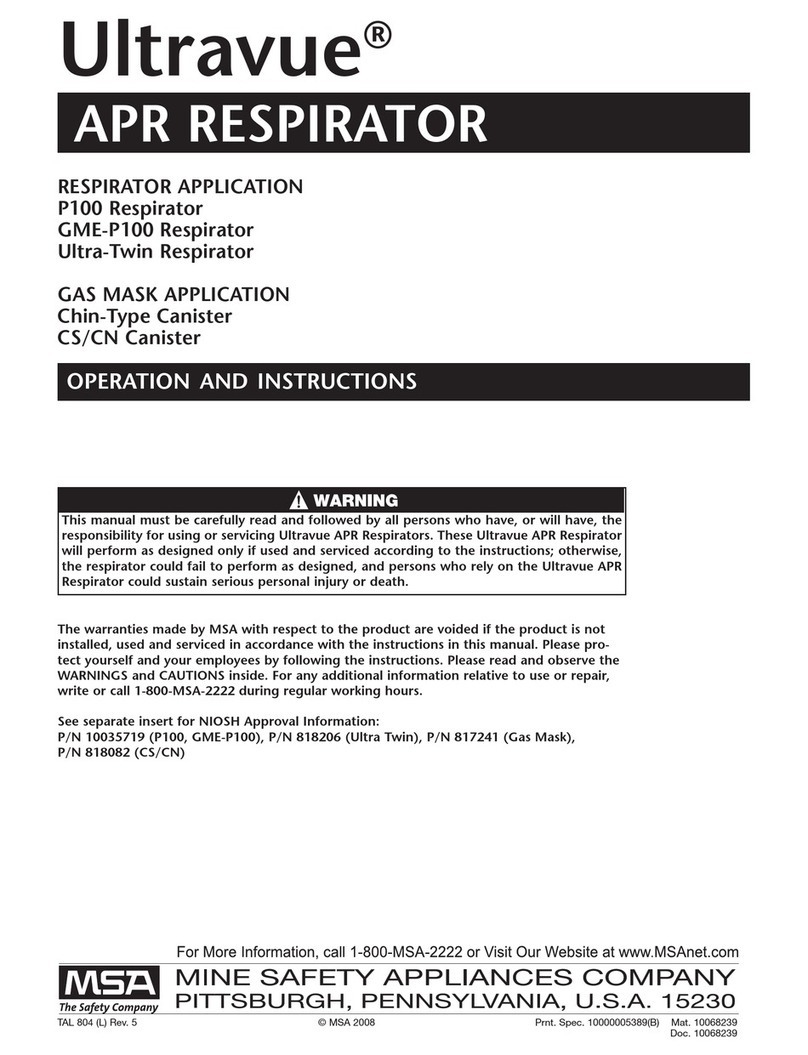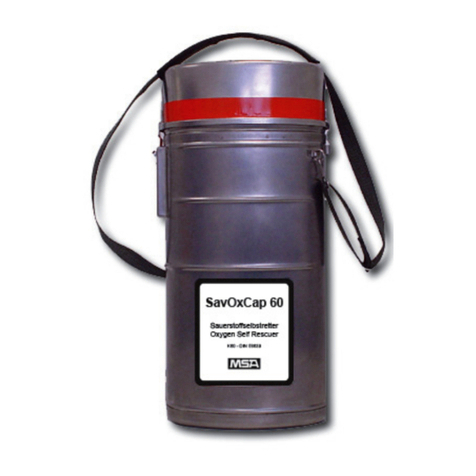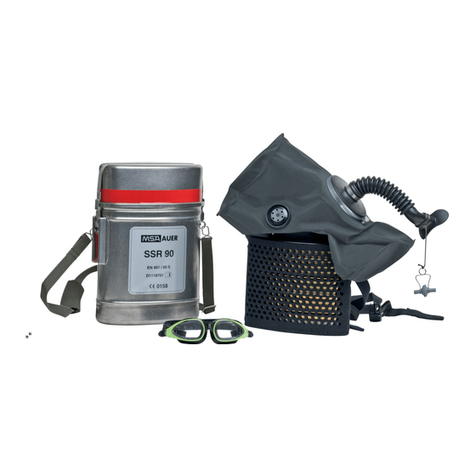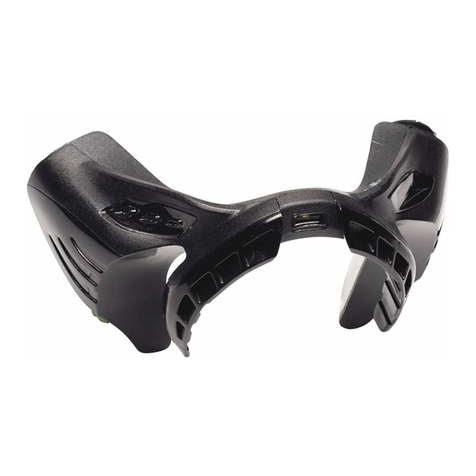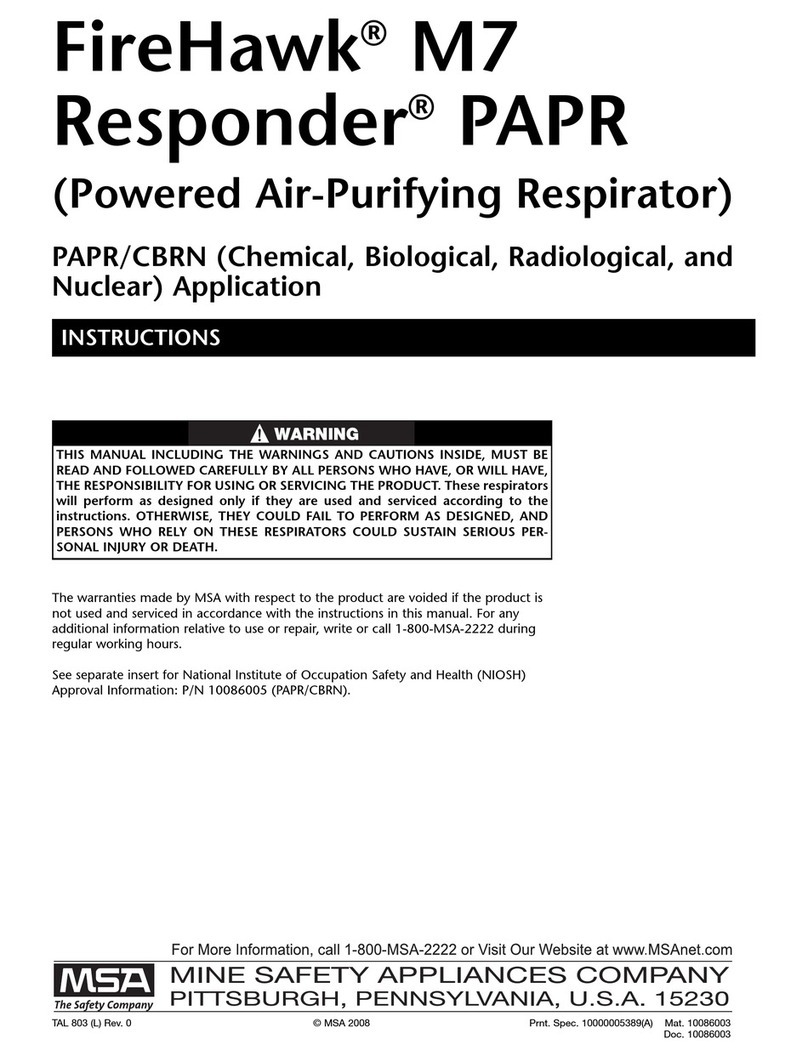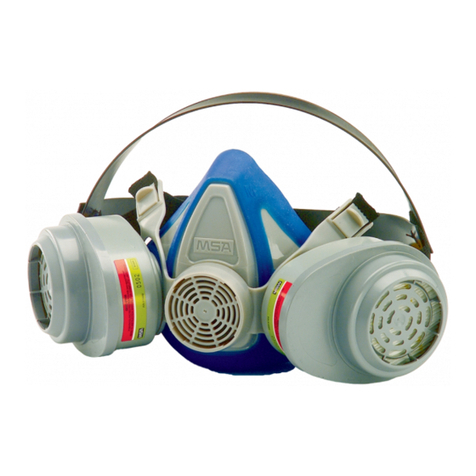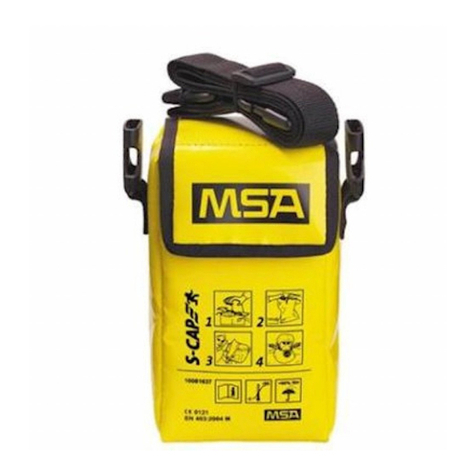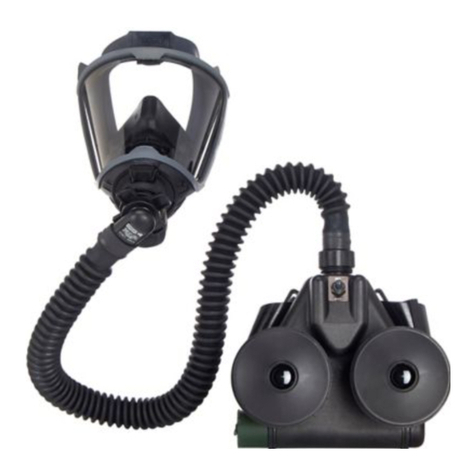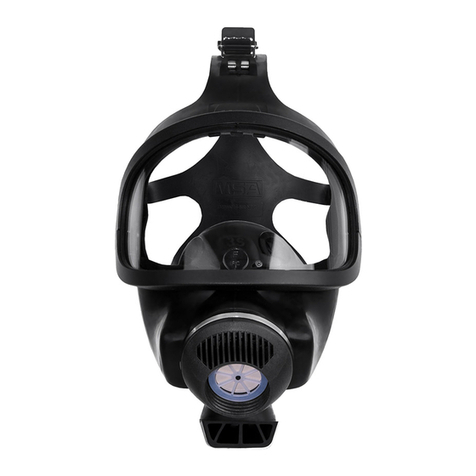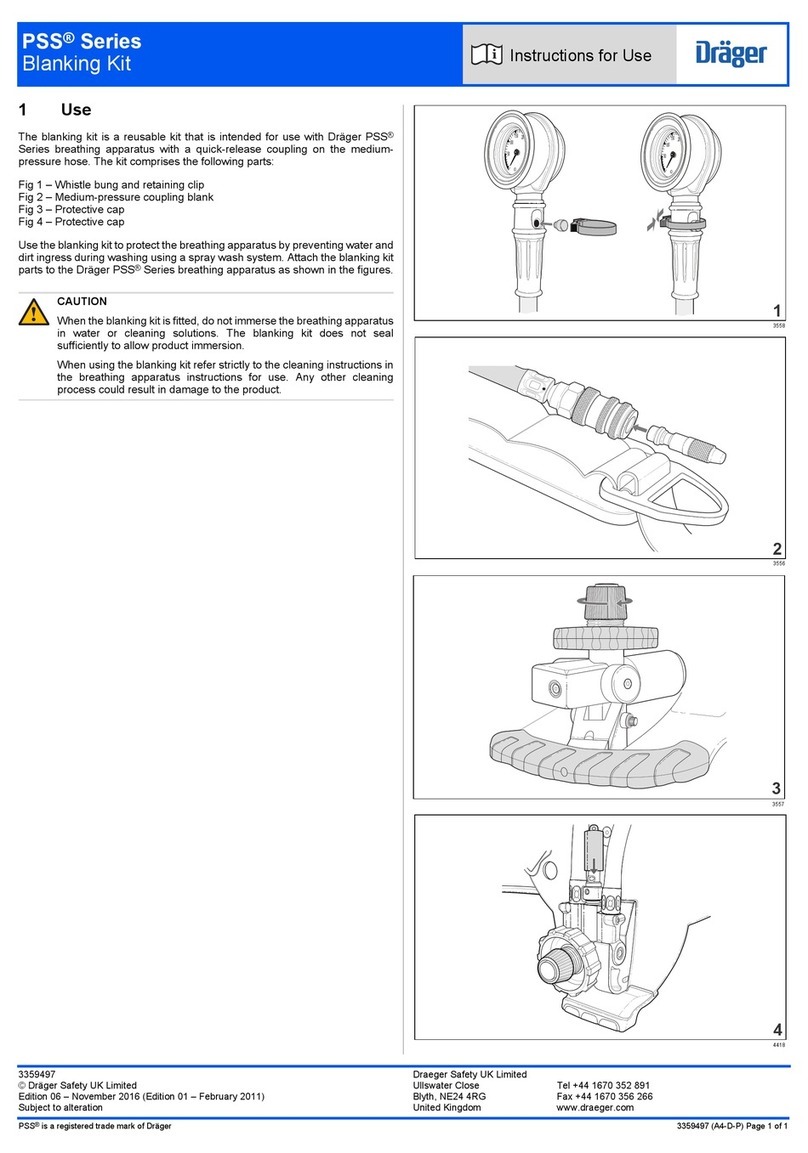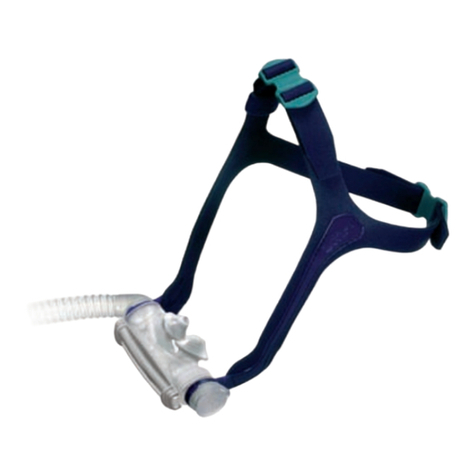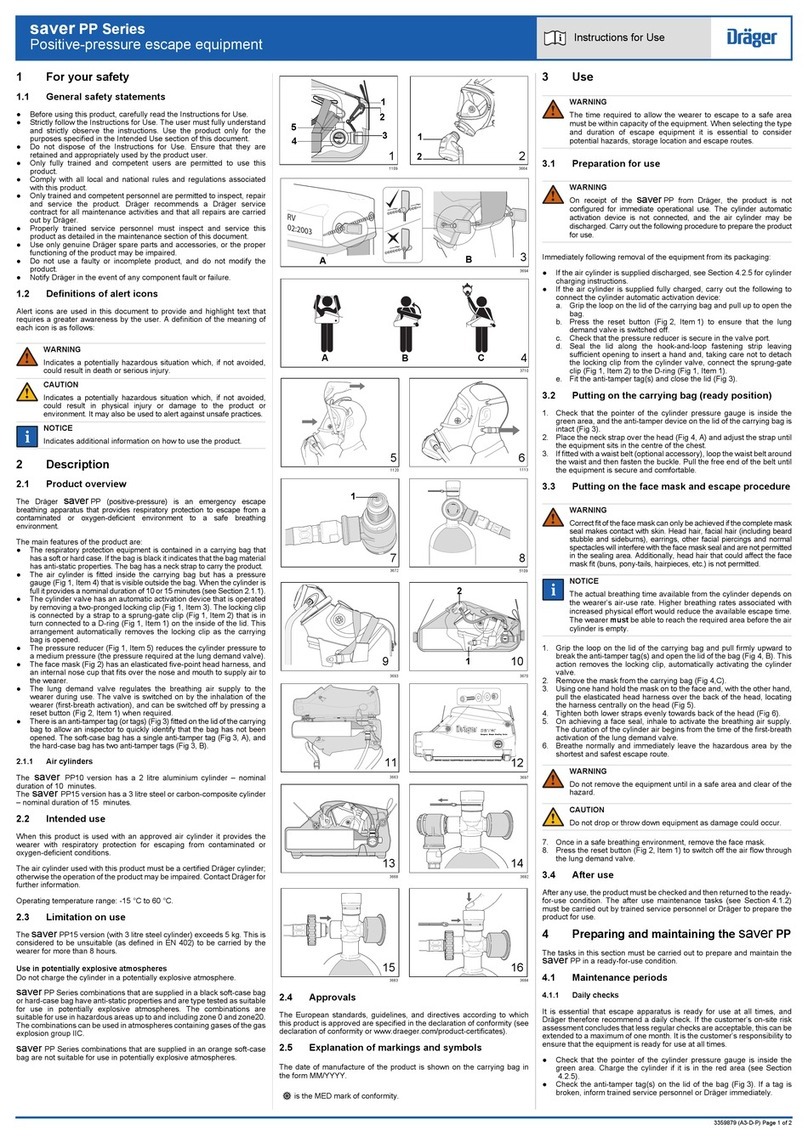
•This respirator/filter provides LI ITED
protection. It may help reduce expo-
sure to airborne biological agents,
including H1N1 (swine) flu virus,
avian (bird) flu virus, other types of
influenza, SARS, or other bacterial or
viral biological agents and help
reduce the risk for influenza infection
during a pandemic, but will NOT elim-
inate the risk of exposure, infection,
illness, or death.
• This respirator/filter is certified by
NIOSH to comply with the require-
ments specified for the designated fil-
ter efficiency level; however, appro-
priate authorities have NOT estab-
lished a safe level of exposure to bio-
logical agents. Therefore, the respira-
tor may NOT prevent transmission of
influenza virus.
•Refer to the Centers for Disease
Control and Prevention (CDC) at
www.cdc.gov for guidance on the use
of respirators to help decrease expo-
sure to H1N1 virus or other airborne
biological agents in community,
home, and occupational settings. The
CDC recommends fit testing, medical
evaluations, and training for optimal
effectiveness when a respirator is
used in a non-occupational setting.
Neglecting these preparatory mea-
sures may cause an unsafe condition.
Respirators used in an occupational
setting UST be used in accordance
with a complete respiratory protection
program as required by OSHA, which
includes proper selection, training, fit-
testing, and fit-checking. Detailed
information on a respiratory protec-
tion program is available by contact-
ing OSHA or visiting www.osha.gov.
•Do NOT remove respirator in contami-
nated areas. The outer surface of the
respirator UST be treated as if it is
contaminated at all times. Tight-fitting
safety goggles, or a full-facepiece
respirator, may further help prevent
transmission of influenza virus.
•The CDC recommends frequent hand
washing and wearing gloves to help
prevent transmission of disease due
to exposure to surfaces where conta-
minants may be present, and also
immediately following removal of the
respirator.
• Do NOT reuse or share maintenance-
free respirators. ALWAYS clean car-
tridge-style respirators before reuse
in accordance with the instructions
provided.
• This respirator/filter is NOT for use by
(a) children, or (b) people with a med-
ical condition that may be adversely
affected by using it.
Failure to follow all warnings and instruc-
tions can result in serious personal
injury or death.
When using filters in an application that
produces sparks, ensure that they are
protected by a shield. Contact with
sparks can damage filters and reduce
protection.
FOR CBRN APPLICATION ONLY
• This respirator provides LI ITED pro-
tection. It is NIOSH approved for res-
piratory protection against atmos-
pheres containing CBRN (chemical,
biological, radiological, & nuclear)
warfare agents; however, it can not
protect against all possible warfare
agents.
• Some CBRN agents may not present
immediate effects from exposure, but
can result in delayed impairment, ill-
ness, or death.
• DO NOT use without a complete
understanding of the instructions and
limitations for this respirator and
proper training. isuse can prevent
the respirator from providing the nec-
essary protection.
INSTRUCTIONS FOR USE AND CARE
LVG 322 (L) Rev. 13 - 10050775
7
